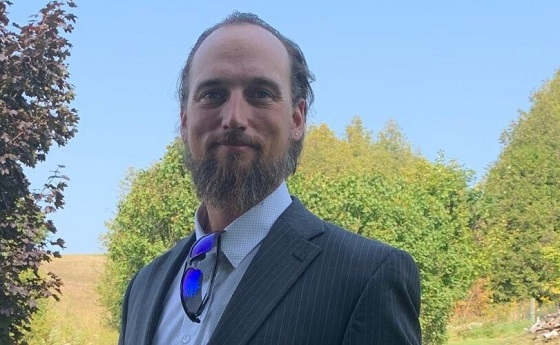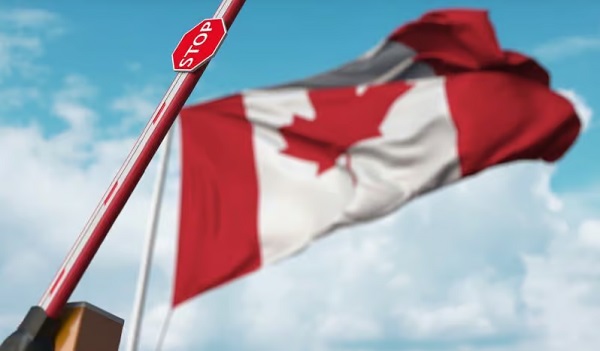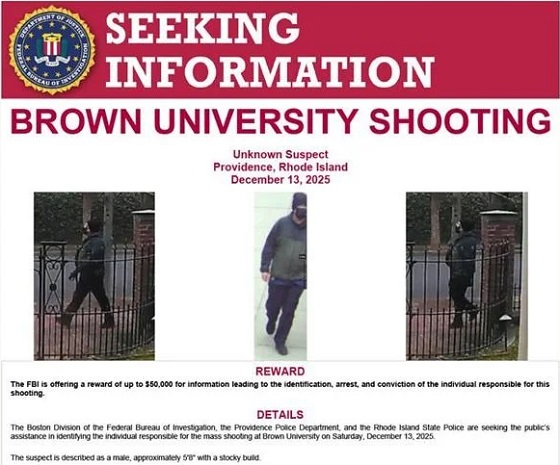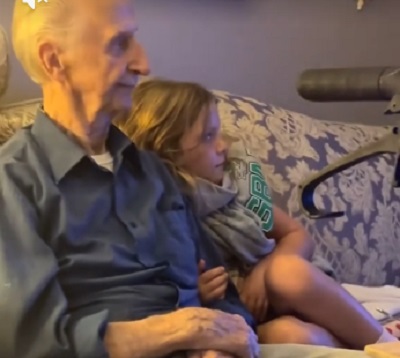COVID-19
Pandemic: We need to be smarter than China (and Italy)

**This article has been amended in light of the ongoing situation in Italy. It was originally posted to dredles.com.

Dr J Edward Les is a Pediatric Emergency Physician practicing in Calgary.
In the winter of 2017 two 17-year-olds with a 3-D printer created a little spinny thingy called the Fidget360 and promoted it on social media.
Fidget spinners quickly went viral. And because there was no patent, dozens of companies hurried to produce knockoffs.
By May of 2017 the little gadgets accounted for 17% of all online toy sales and had spun their way into every nook and cranny of the globe. Every kid I tended to in the emergency department of my hospital was spinning one of the plastic gizmos—and more often than not, so were their parents.
But then—just as quickly as it started—it was over. By September of 2017 fidget spinners had vanished, consigned to trash bins and forgotten corners of toy rooms and closets.
There’s a word we use to describe this sort of phenomenon, where something spreads quickly throughout an entire country, continent, or the whole world and affects an exceptionally high proportion of the population before burning itself out.
That word is pandemic, of course. We use it to describe massive outbreaks of disease, typically, not outbreaks of fidget spinners.
It’s a scary term—one that conjures up images of the Spanish flu, which wiped out up to 100 million people in 1918 (five percent of the world’s population); or of the bubonic plague, which ravaged the globe in the 14th century, killing half of Europe’s people and knocking the world population down to 350 million from 475 million.
Not all pandemics are as lethal as the Black Death or the Spanish flu, mind you. The H1N1 influenza pandemic of 2009, for instance, killed approximately half a million people—a big number, but roughly on par with the death toll extracted by the seasonal flu each year.
Another pandemic—COVID-19—now threatens the world. This time the viral assassin is a novel coronavirus that originated in China.
How much danger we are in remains a matter of intense debate. Death toll predictions run the gamut from the ridiculous to the obtuse, from epic eradication of mankind on the scale imagined by novelist Stephen King in The Stand, all the way to: “Nothing to see here, folks, keep calm and carry on.”
Rampant misinformation, relentless spin, and wacky thinking amplified by social media hasn’t brought clarity, suffice it say. U.S. President Donald Trump labeled the coronavirus a Democratic conspiracy. Paranoid wing-nuts blather on about Chinese bioweapons. Some people blame a vengeful God; others warn shrilly (and wrongly) of the risk of mail from China or of the danger of eating in Chinese restaurants.
I wrote about the coronavirus outbreak on February 20, seemingly an eternity ago. At the time I wasn’t overly stressed—just a bit fidgety. Twelve thousand people were infected and 250 were dead, pretty much all in the epicentre of Hubei province in China; but it seemed like a drop in the viral bucket compared to the seasonal flu, which takes out up to 600,000 people globally per year.
Plus, after initially dismissing the virus as a threat, the Chinese had reacted with unprecedented measures, locking down Wuhan and a slew of other cities, cordoning off Hubei province, shutting down mass transit, closing airports, and confining 60 million people to their homes—berating those who dared to venture outside with government drones.
It seems to have worked for the Chinese. Epidemiologic data show that the virus continued to spread post-lockdown, but primarily among families already infected pre-quarantine. Community spread was stopped in its tracks.
The number of cases in Hubei province ultimately crested at around 67,000, with 2900 dead. (Just a smattering of new cases are being reported.)
By the time the Chinese instituted their draconian quarantine measures, of course, the viral dandelion had gone to seed: infectious spores of coronavirus had already blown around the world.
Still, the worst-case scenario for Canada, I surmised, surely couldn’t be worse than what Hubei endured.
Applying Hubei’s experience—a population infection rate in that province of only 0.11% (67,000 divided by 60 million) and a case fatality rate of 4.3%— to Canada’s population of 37 million would mean roughly 41,000 cases and 1750 dead in Canada.
Bad enough—but seasonal influenza kills 3500 Canadians every year; traffic accidents kill 2000 people.
So not a huge deal, right?
But here’s the problem: Canada is not China. Neither is the U.S., or any of the other countries where coronaviral spores have taken root.
In one sense, at least, that’s a good thing: our air is much cleaner, and far fewer of us smoke cigarettes, leaving us with lungs presumably less hospitable to invading coronavirus.
However, we are not going to quarantine entire Canadian cities and provinces (it’s too late for that now anyway).
We’re not likely to close airports and shut down mass transit.
We’re not going to chase our citizens with drones.
We’re not going to mandate that entire city populations stay in their houses for weeks or months on end.
And we’re not likely to be as good at keeping infected patients alive—not because we lack the know-how, but because we lack adequate space, supplies, ventilators, and personnel.
The WHO’s Bruce Aylward, commenting on the case fatality rate observed in China, had this to say about the regime’s efforts:
“That’s the mortality in China — and they find cases fast, get them isolated, in treatment, and supported early. Second thing they do is ventilate dozens in the average hospital; they use extracorporeal membrane oxygenation (removing blood from a person’s body and oxygenating their red blood cells) when ventilation doesn’t work. This is sophisticated health care. They have a survival rate for this disease I would not extrapolate to the rest of the world. What you’ve seen in Italy and Iran is that a lot of people are dying.”
Canada may do better than Italy and Iran. But our hospitals are already stuffed to the gills (and people won’t stop suffering from heart attacks and strokes and trauma and cancer just because COVID-19 is kicking around).
We can’t, like the Chinese, build enormous hospitals almost overnight specifically for coronavirus patients. (We can’t even build a pipeline in this country.)
Does all of the above mean we’re screwed?
Not at all.
Certainly, we can’t do what the Chinese did. Nor should we try. The Italians are trying, and their country is descending into unmitigated chaos.
We must adopt a radically different strategy.
First, we must acknowledge that stopping this virus is like trying to stop the wind.
We must acknowledge what any seasoned epidemiologist can tell you: viral pandemics burn themselves out—but only after millions of people get sick and recover, freshly equipped with powerful antibodies to the virus. The resulting collective population immunity—called herd immunity—prevents the virus from hopping from person to person to person with epidemic speed, and the pandemic dies out.
There are no other options. Well, there are two, but neither are on the near horizon: complete eradication of the virus (as mankind did with smallpox), or the development of an effective vaccine.
We must let this pandemic burn itself out.
But just as importantly we must control how that happens.
The novel coronavirus has an R0 value of 2.2, which means that each person can infect 2.2 others. The case fatality rate across all of China was 2.3% (it’s higher in Wubei province and outside of China—it’s over 4% in Italy, for example). Those numbers, ominously, aren’t much different from the Spanish flu.
Knowing that most of the world cannot replicate China’s totalitarian lockdown to control viral spread, epidemiologists estimate that between 30-60% of the world could end up infected with coronavirus.
Wait a minute, you say: Hubei province had a population infection rate of only 0.11%. That’s a far cry from 30%.
Sure. But the Asian elephant in the room is that China, by its draconian quarantine measures, prevented community spread—which also very likely prevented the development of herd immunity.
When Wuhan and her 15 sister cities are re-opened; when the stranglehold on Hubei province is released; when the airports re-open and the trains start running and commerce restarts: we may see a second wave of infection in China. The virus is not gone, and because the Chinese prevented community spread from continuing for two months, most of their population is probably not immune.
It was the second wave of the Spanish flu, remember, that killed most of the people in that pandemic. And China could be on the cusp of a second wave of COVID-19.
We must not allow this to happen globally with COVID-19.
If epidemiologists are correct even at the low end of their estimates—30% of the world’s population infected and a case fatality rate (also at the low end) of 2.3%—that means 53 million dead: roughly 255,000 of them in Canada (73 times the death toll of the seasonal flu).
Horrific stuff. But the achilles heel of the coronavirus is that it primarily kills old people. And we can exploit that.
The Spanish flu killed across demographics, disproportionately killing those in the age categories of 20 to 40, over 65, and younger than five. The high mortality in healthy people was a unique feature of this pandemic – as was the case with the 2009 H1N1 pandemic.
But that’s not the case with COVID-19: it kills mostly the elderly and the infirm. The mortality rate in those over 80 is 15%; in those over 70, eight percent; and in those over 60 it’s just under four percent. In Italy, where the death toll stood at 366 as of Sunday, the average age of those who have died is 81.
At younger ages the mortality rate drops off dramatically – the vast majority of younger people, especially kids, recover without incident, most of them with mild or no signs of illness.
But—and this is key—even though children (and healthy adults) may be completely symptomatic or have only mild symptoms after they acquire coronavirus, they still carry the virus: they are vectors, much like the rats that spread the bubonic plague in the 14thcentury.
We are not going to exterminate the children as we did the rats—but we can take real steps to mitigate the risk of viral spread.
Those most vulnerable to the deadly effects of this virus—the elderly and the medically compromised—should self-quarantine while we judiciously allow the virus to do what it does among the rest of us.
That means that we all continue to protect ourselves sensibly, just as we do from the flu: wash our hands, cough into our elbows, stay home if we are sick, learn the “Ebola handshake”, and stay away from hospitals and clinics unless truly necessary.
In an earlier version of this piece I wrote: “We must not close the schools, the airports, the theatres, the restaurants.”
I’m no longer so sure.
This is a fast-moving epidemic, and it is imperative—imperative—that we pay close attention to what is happening elsewhere as this virus marches around the world.
Reports out of Italy are deeply sobering: the elderly are dying, and they are sickening at a furious rate. Hospital resources have been completely overwhelmed.
The Italians were utterly unprepared for the sheer volume of critically ill patients requiring intensive care all at once.
And so is Canada.
We need to slow the virus down. We need to impede the rate of its spread to the elderly.
It may be prudent, as COVID-19 establishes a foothold in Canada. to proactively close schools and universities, and to cancel concerts and conferences and other mass gatherings.
Messaging is key. School closures should not incite fear and alarm. The risk to the young and healthy remains very low—whether or not we close schools and cancel concerts doesn’t change that.
But we must do whatever we can to slow the dissemination of virus to the elderly and medically compromised, to as much as possible lessen the strain on our health care resources.
It is far easier for hospitals to deal with a crush of infected, critically ill patients over a four month period than over a four weekperiod.
We must, in the language of disease, “flatten the epidemiologic curve”.
We must sequester the elderly and the medically compromised away from the rest of the population. They should avoid crowds, travel, and children—likely until August or later.
We cannot do this by decree—that will never work. But we must shout this message of self-quarantine from the rooftops loudly and repeatedly so that the elderly and medically compromised understand that if they do not comply, they stand a high risk of dying.
At the same time, it is essential that we protect heath care workers and those who are medically at-risk in hospitals: we must enact systems of external triage (a.k.a. drive-through emergency medicine), external treatment sites, telemedicine, mobile treatment teams, and so on.
These measures are critical to to lessen the coming unprecedented demands on our health care system, to reduce the death rate and to buy time until we either have herd immunity or an effective vaccine.
Our politicians and medical leaders have dropped the ball on this. They’ve been fidgeting while this virus burns, spinning confused and garbled messages of half measures and wrong measures.
It’s time to stop the fidgeting, to do away with the spin, and to lead with strength and clarity.
We must not allow the world to succumb to chaos.
We must not allow the economic infrastructure of the world to be destroyed, and society completely upended, by a viral pandemic that targets primarily the elderly and medically compromised.
LISTEN: My date with self-isolation amid the Covid 19 scare – J’Lyn Nye Interview
There is no need to panic.
We should remain calm and carry on.
But nor should we keep our head in the sand.
As Bruce Aylward put it:
“Get organized, get educated, and get working.”
COVID-19
Judge denies Canadian gov’t request to take away Freedom Convoy leader’s truck

From LifeSiteNews
A judge ruled that the Ontario Court of Justice is already ‘satisfied’ with Chris Barber’s sentence and taking away his very livelihood would be ‘disproportionate.’
A Canadian judge has dismissed a demand from Canadian government lawyers to seize Freedom Convoy leader Chris Barber’s “Big Red” semi-truck.
On Friday, Ontario Court of Justice Judge Heather Perkins-McVey denied the Crown’s application seeking to forfeit Barber’s truck.
She ruled that the court is already “satisfied” with Barber’s sentence and taking away his very livelihood would be “disproportionate.”
“This truck is my livelihood,” said Barber in a press release sent to LifeSiteNews.
“Trying to permanently seize it for peacefully protesting was wrong, and I’m relieved the court refused to allow that to happen,” he added.
Criminal defense lawyer Marwa Racha Younes was welcoming of the ruling as well, stating, “We find it was the right decision in the circumstances and are happy with the outcome.”
John Carpay, president of the Justice Centre for Constitutional Freedoms (JCCF), said the decision is “good news for all Canadians who cherish their Charter freedom to assemble peacefully.”
READ: Freedom Convoy protester appeals after judge dismissed challenge to frozen bank accounts
“Asset forfeiture is an extraordinary power, and it must not be used to punish Canadians for participating in peaceful protest,” he added in the press release.
As reported recently by LifeSiteNews, the Canadian government claimed that Barber’s truck is an “offence-related property” relating to his involvement in the 2022 protests against Canada’s COVID mandates.
At this time, the court ruling ends any forfeiture proceedings for the time being, however Barber will continue to try and appeal his criminal conviction and house arrest sentence.
Barber’s truck, a 2004 Kenworth long-haul he uses for business, was a focal point in the 2022 protests. He drove it to Ottawa, where it was parked for an extended period of time, but he complied when officials asked him to move it.
On October 7, 2025, after a long trial, Ontario Court Justice Perkins-McVey sentenced Barber and Tamara Lich, the other Freedom Convoy leader, to 18 months’ house arrest. They had been declared guilty of mischief for their roles as leaders of the 2022 protest against COVID mandates, and as social media influencers.
Lich and Barber have filed appeals of their own against their house arrest sentences, arguing that the trial judge did not correctly apply the law on their mischief charges.
Government lawyers for the Crown have filed an appeal of the acquittals of Lich and Barber on intimidation charges.
The pair’s convictions came after a nearly two-year trial despite the nonviolent nature of the popular movement.
COVID-19
Freedom Convoy protester appeals after judge dismissed challenge to frozen bank accounts

From LifeSiteNews
Protestor Evan Blackman’s legal team argues Trudeau’s Emergencies Act-based bank account freezes were punitive state action tied directly to protest participation.
A Freedom Convoy protester whose bank accounts were frozen by the Canadian government says a judge erred after his ruling did not consider the fact that the funds were frozen under the Emergencies Act, as grounds for a stay of proceedings.
In a press release sent out earlier this week, the Justice Centre for Constitutional Freedoms (JCCF) said that Freedom Convoy protestor Evan Blackman will challenge a court ruling in his criminal case via an appeal with the Ontario Superior Court of Justice.
“This case raises serious questions about how peaceful protest is treated in Canada and about the lasting consequences of the federal government’s unlawful use of the Emergencies Act,” noted constitutional lawyer Chris Fleury. “The freezing of protestors’ bank accounts was part of a coordinated effort to suppress dissent, and courts ought to be willing to scrutinize that conduct.”
Blackman was arrested on February 18, 2022, during the police crackdown on Freedom Convoy protests against COVID restrictions, which was authorized by the Emergencies Act (EA). The EA was put in place by former Prime Minister Justin Trudeau’s Liberal government, which claimed the protests were violent, despite no evidence that this was the case.
Blackman’s three bank accounts with TD Bank were frozen due to his participation in the Freedom Convoy, following a directive ordered by Trudeau.
As reported by LifeSiteNews, in November of this year, Blackman was convicted at his retrial even though he had been acquitted at his original trial. In 2023, Blackman’s “mischief” and “obstructing police” charges were dismissed by a judge due to lack of evidence and the “poor memory of a cop regarding key details of the alleged criminal offences.”
His retrial resulted in Blackman getting a conditional discharge along with 12 months’ probation and 122 hours of community service, along with a $200 victim fine surcharge.
After this, Blackman’s application for a stay of proceedings was dismissed by the court. He had hoped to have his stay of proceedings, under section 24(1) of the Charter of Rights and Freedoms, allowed. However, the judge ruled that the freezing of his bank accounts was legally not related to his arrest, and because of this, the stay of proceedings lacked standing.
The JCCF disagreed with this ruling, noting, it “stands in contrast to a Federal Court decision finding that the government’s invocation of the Emergencies Act was unreasonable and violated Canadians’ Charter rights, including those targeted by the financial measures used against Freedom Convoy protestors.”
As of press time, a hearing date has not been scheduled.
In 2024, Federal Court Justice Richard Mosley ruled that Trudeau was “not justified” in invoking the Emergencies Act.
In early 2022, the Freedom Convoy saw thousands of Canadians from coast to coast come to Ottawa to demand an end to COVID mandates in all forms. Despite the peaceful nature of the protest, Trudeau’s federal government enacted the EA in mid-February.
After the protesters were cleared out, which was achieved through the freezing of bank accounts of those involved without a court order as well as the physical removal and arrest of demonstrators, Trudeau revoked the EA on February 23, 2022.
-

 Automotive11 hours ago
Automotive11 hours agoPoliticians should be honest about environmental pros and cons of electric vehicles
-

 Agriculture2 days ago
Agriculture2 days agoWhy is Canada paying for dairy ‘losses’ during a boom?
-

 Agriculture2 days ago
Agriculture2 days agoCanadians should thank Trump for targeting supply management
-

 Business2 days ago
Business2 days agoCanada Hits the Brakes on Population
-

 Business2 days ago
Business2 days agoWhite House declares inflation era OVER after shock report
-

 Daily Caller1 day ago
Daily Caller1 day ago‘Almost Sounds Made Up’: Jeffrey Epstein Was Bill Clinton Plus-One At Moroccan King’s Wedding, Per Report
-

 Crime1 day ago
Crime1 day agoBrown University shooter dead of apparent self-inflicted gunshot wound
-

 Business1 day ago
Business1 day agoTrump signs order reclassifying marijuana as Schedule III drug





